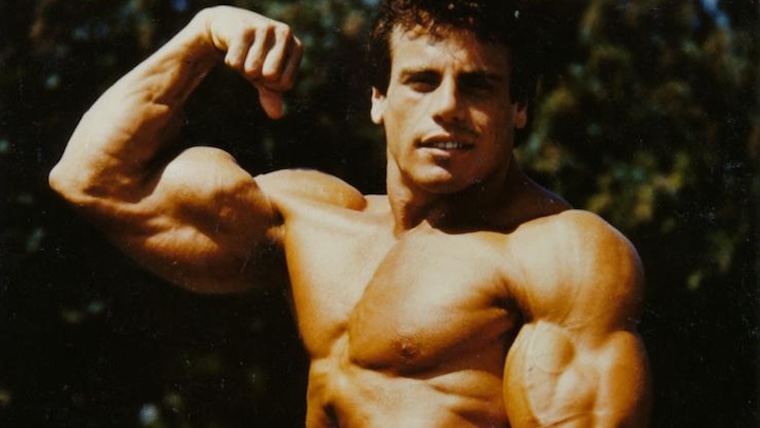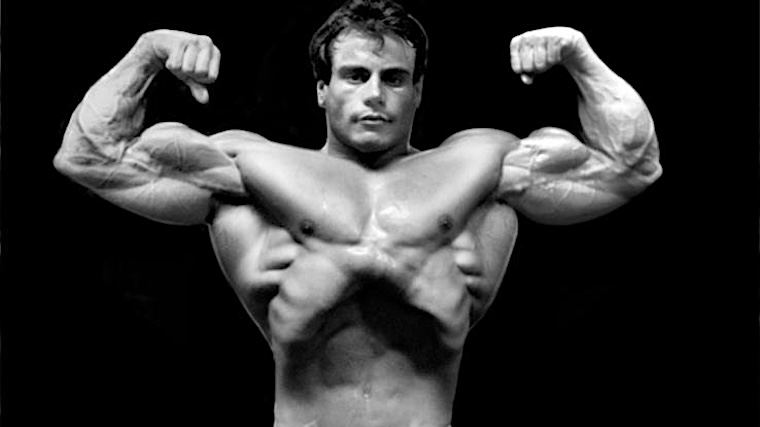Imagine lying on the floor, collapsed in a pool of sweat. Your legs are aching; your heart feels like it could explode right through your chest. As you try to open your eyes, sweat blurs your vision. There is a voice screaming, but it just sounds like noise.
That sounds like an extreme moment, and it is. Now, imagine that this was only after four sets of a leg workout.
This was the situation that young Canadian football player John Robert Cardillo found himself in. He was training under the watchful eye and intense voice of Arthur Jones, who had just pushed the then-16-year-old through those four sets that he said brought him to “absolute muscular failure.”
Editor’s Note: Quotes and information provided in this article were acquired via multiple phone calls with John Robert Cardillo.
The Path to ‘Hi-Intensity’
This workout took place in Jones’ Nautilus Machines facility. Jones is best known as the founder of the weight-training machine company and the godfather of what became known as “high-intensity training” (or “hi-intensity” as Jones preferred spelling it). Many bodybuilding champions, such as Casey Viator, trained under his learning tree. Cardillo was the latest.
By the time he reached the Nautilus Compound Leg Machine, Cardillo had lost focus and forgot the rest of the reps he was tasked to do. He was unable to complete the rest of the workout.

Cardillo shared that Jones told him, “You have now experienced what a real ‘hi-intensity’ leg workout is all about.”
Cardillo felt that he had made significant progress since starting training at 14 years old and weighing 122 pounds. He originally wanted to train for football and joined a local YMCA.
In nine months, Cardillo said he gained 30 pounds by religiously training three times a week by following a traditional football training program with bench presses, deadlifts, squats, rows, pull-ups, and dips. He could not lift weights during the season, but his team won the regional title, which made it worth it.
After the last game, he resumed his workouts but realized that he enjoyed them more than the football practices. The “iron bug” bit him. Wanting to learn more about training, he read as many magazines as he could, learning from champions of the day, such as Arnold Schwarzenegger and others. Cardillo even started following the “Austrian Oak’s” high-volume training programs.
“If the pros did it, it must work,” Cardillo thought. For the next year, he performed 15-20 sets per body part. Some muscle groups, like legs and back, got as many as 30 sets.

After more than 12 months of training nine times a week, however, Cardillo felt exhausted and had not made the improvements he had hoped for. Not wanting to give up and having a curious mind, Cardillo researched why this was happening.
One article that caught Cardillo’s eye was about those Nautilus machines that would eventually change his life. The article called the machines “the thinking barbell.” Cardillo was so intrigued that he contacted Nautilus and requested extra information. They sent him two important documents — “Nautilus Bulletins 1 and 2.”
Cardillo still has the bulletins, which he says are “brilliant.” Jones explained what he felt were the shortfalls of conventional dumbbells and barbells versus how Nautilus machines were constructed to provide a full range of movement resistance.
Jones said this produced better results because the machines were built to provide 100 percent resistance throughout the full range of motion. To do this, he invented a “cam” mechanism that adjusted the resistance throughout the exercise, creating what Jones called a “thinking barbell.”
Jones also explained that for weight training to increase strength and muscular size, it must be performed with the greatest intensity of effort possible. That means continuing to perform as many repetitions as possible until total muscular failure is reached, which is what HIT was created for.
Anything less than 100 percent effort would not produce the best results possible.
[Related: A Guide to the Best Pre-Workouts, Tested and RD Approved]
Three Phases of Failure
Jones explained in detail the various ways of performing high-intensity training to produce what he felt were the greatest possible results, backed by biomechanics and physiology.
Each positive portion of the reps had to be performed strictly while at the same time trying to move the weight as fast as possible without cheating or using momentum to lift the weight. Each exercise was to be performed to positive failure or until a full repetition could no longer be completed.
The exercise’s eccentric (or negative) must be performed slowly with control. Jones explained that controlling the negative was more important than the positive part due to the muscle being stronger in the eccentric of an exercise. Lowering the weight at his range of three to 10 seconds forced the muscle to reach negative failure.

Static failure meant holding the weight in the halfway position for as long as possible. This positions the muscle against vertical gravity. Jones shared that this should be done on the last rep. Jones told Cardillo that holding for five seconds is a must, but longer is the future goal.
Cardillo was even more surprised that Jones preached the importance of training less rather than more. He advocated performing only one to two sets of exercises for smaller body parts, such as the biceps and calves, by training for muscular failure and consistently trying to increase the resistance after reaching 10 reps with the previous weight.
Larger muscles warranted four to six sets each. When more than two sets were performed, they involved an isolation movement followed by a compound movement. After Jones’s definition of failure was reached, Cardillo’s job for that muscle was done.
As far as Jones was concerned, any bodybuilder who trained more than 40 minutes per workout three days per week was not training hard enough. He said that 30-40 minutes was the most anyone could do by training in his preferred fashion. Any amount of training beyond this was what he called “fanatical overtraining.”
The man now known as “Mr. Hi-Intensity” shared the details of that first workout below. He performed all four of these exercises in succession without rest, continuing each set to failure under Jones’s conditions.
Arthur Jones’s HIT Workout, Performed by John Robert Cardillo
- Nautilus Hip and Back Machine — 18 reps
- Prone (Lying) Leg Curl Machine — 16 reps
- Leg Extension — 14 reps
- Compound Leg Press — 21 reps
Cardillo continued training under Jones’s philosophy and competed in several amateur bodybuilding shows before retiring at age 23 to focus on building his commercial gym business. He also started working with clients to achieve personal transformations and contributed to several magazines over the years, including MuscleMag.
Featured Image courtesy of John Robert Cardillo.